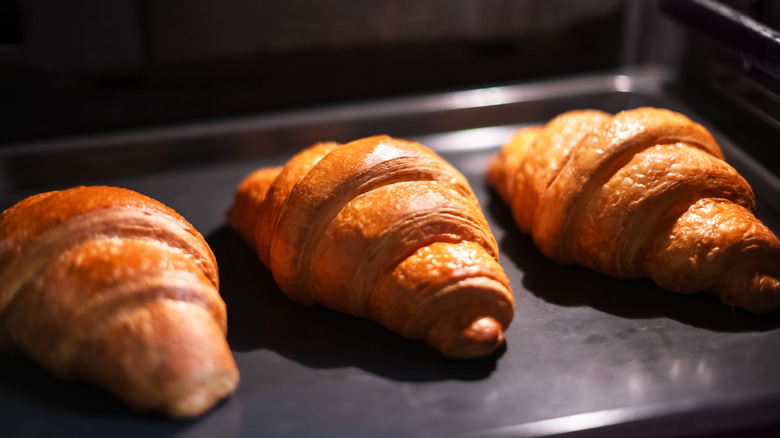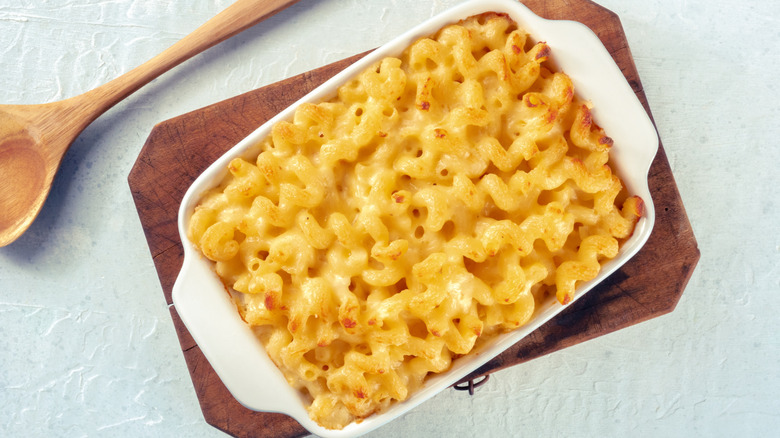The Oven Rule You Should Always Follow When Baking
Whether you are baking pork tenderloin or a batch of extra soft chocolate chip cookies, there's one rule that is imperative to follow — preheat the oven! It's a step that is easy to forget, and you may be tempted to just throw your dish in without actually waiting until the oven is hot, but this is a big mistake.
When the oven is completely preheated, it ensures even cooking. For example, if you want to roast your vegetables to perfection every time, the consistent (and high) heat makes sure that you do not have spots that are either too firm or too soft. Also, it gives the veggies a chance to start to brown right away. Starting in a cooler oven will likely mean that they will cook through before they develop good caramelization. Also, if the oven is not up to temperature, the cooking time will differ from the recipe, making it harder to judge when exactly you should pull your food out.
For laminated baked goods, biscuits, homemade pizza dough, and puff pastry, that uneven heat can cause the bottom side to burn before the tops brown, and too much butter can leak out. Anything that needs a rise — such as frittatas, scones, and bread — benefits from the blast of heat. Too cold of a starting point will cause your bake to stay flat. Given all the benefits, the 15-minute or so wait to preheat is worth it, but you should also consider investing in an oven thermometer to check that the actual temperature inside matches what you set the dial to.
Exceptions to the preheated oven rule
There are certain situations where preheating the oven is not so imperative, but the exceptions are few. You can experiment with starting certain muffin, cake, quick bread, and cookie recipes in a cold oven. The results can be better, depending on what you are after, but it is best to play with these variables only if you are an avid baker and have the time to take the risk. If you are curious about the method, seek out recipes that are specifically written that way, such as Southern-style pound cake that skips preheating.
Braised meats, oven-baked beans, or slow-cooked vegetables are also largely unaffected. Because they cook for a long period of time at a lower heat, the cooler beginning temperature does not really change how the final dish turns out. Another exception: Starting cooking in a cold oven may be key to perfecting bacon. Finally, dishes that only require warming through and light browning on top — like mac and cheese or upscale tuna casserole — will not be wildly affected if you pop them in the oven before it is all the way heated up.


